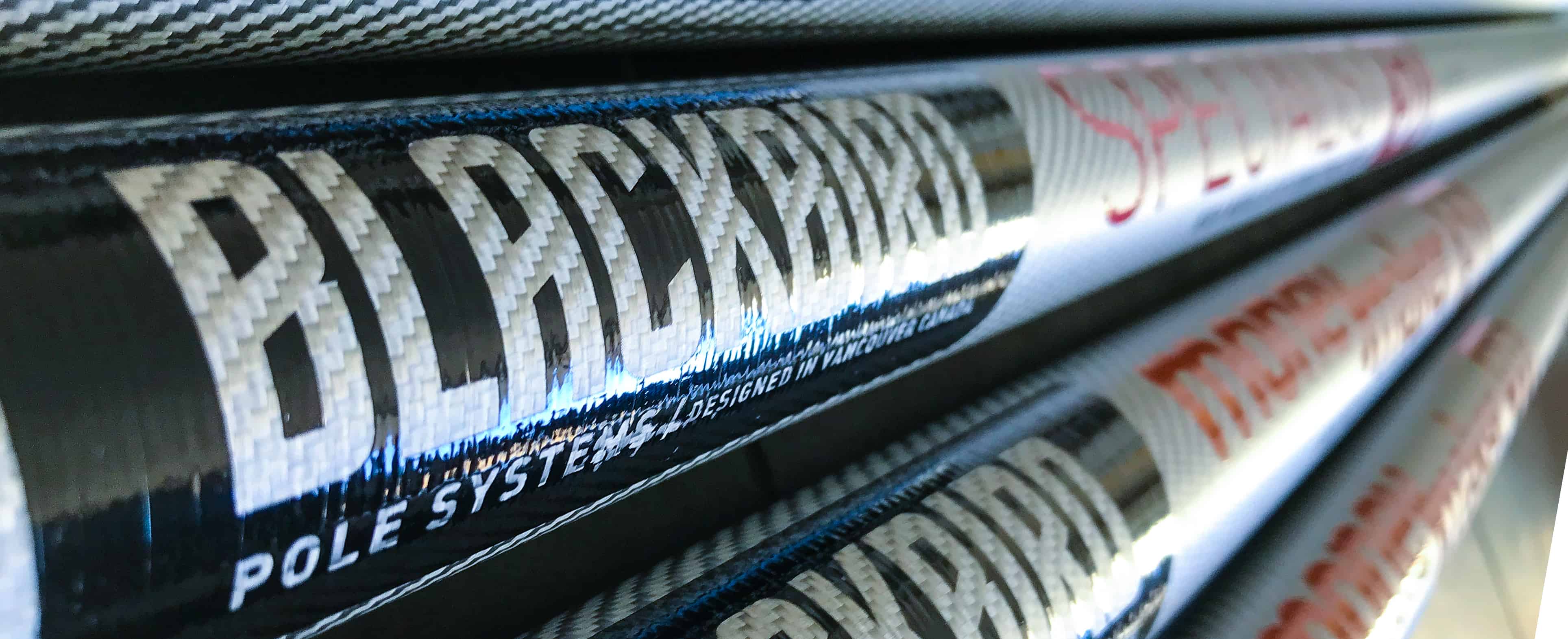History of Carbon Fibre Water Fed Poles – Part 2
Who introduced the carbon fibre water fed pole to the market?
In the early 2000s, Gardiner water fed poles of England introduced and then dominated the world carbon fibre water fed poles market. Despite the high cost, slowly but surely, carbon fibre water fed poles were appearing in every major city that cleaned windows.
Why did carbon fibre water fed poles increase in use?
A key reason in the increasing use and adaptation of carbon fibre water fed poles was work safety. There was greater awareness of the dangers of ladder work. A window cleaner’s work included cleaning windows as high as three stories, sometimes four stories, by ladder! Very, very dangerous. Ladders with a poor footing would slip, or the top of the ladder would slide to the right or left, and the worker would fall. Also, longer ladders were very heavy and hard to maneuver. Moving 32 to 40 foot ladders put great strain and torque on the worker’s lower back, often resulting in injury.
Quoting Liberty Mutual Research institute:
“According to the American Academy of Orthopedic Surgeons, every year 500,000 people are treated for ladder-related injuries and approximately 300 of these incidents prove to be fatal. In 2007 alone, more than 400 people died as a result of falls on or from ladders or scaffolding.”
The high risk of ladder work injury was always there but the cost of injury compensation and workers safety insurance was increasing. The shift to reducing ladder work was not about care for the worker but companies trying to control the cost of doing business.
This did benefit the window cleaning worker. New carbon fibre water fed poles enabled a window cleaner to work from the safety of the ground and clean up to 6 stories high windows.
What happened to the Tucker Pole Company?
With the success of Gardiner carbon water fed poles, the inverse quickly happened with Tucker aluminum water fed poles of America. I can’t find the exact day, but Tucker soon went out of business, but not forever… As previously discussed, Tucker’s aluminum pole was a poorly designed beast of a tool. Good riddance! With the demise of the Tucker Pole, Gardiner Pole Company had the world in its hand. There was no one else. With in a short period of time, most window cleaners had a Gardiner carbon fibre pole. But not for long.
Gardiner Pole Company would not sell directly to an overseas end user. They strictly adhered to protecting their distributors’ abroad. Gardiner was still the premier water fed pole, but because the sales channels had so many layers, poles and parts were slow and hard to come by, and often overpriced.
The aluminum Tucker pole still was in use by many window cleaners. Window cleaners could still get Tucker parts to keep their aging poles workable. Tucker poles were so common that the vernacular for water fed pole was “Tucker pole”. Kind of like “Kleenex” is used for tissues. This hold true today. We still say we have “Tucker pole” jobs! It reveals how strong the Tucker brand is.
As the 2000s progressed, other pole companies started to appear. The UK had some local companies start to give Gardiner some competition. United States Reach-iT Poles (among others) were starting development in 2005. The Tucker brand was acquired by RGH Products and the Tucker Pole was resurrected in a new carbon fibre form. The new carbon fibre Tucker pole is excellent and equal to the Gardiner pole. Australia’s Aero Poles were in development also. However, because of the cost of shipping and import taxes, few carbon fibre pole companies had sales outside their respective countries.
Are in-house no name carbon fibre poles any good?
Chinese carbon pole manufacturers started to offer direct sales of generic water fed poles. Some western (North America and Australia) janitorial supplies companies were slapping their sticker on them and branding them as an in-house pole. For the most part these generic poles weren’t bad. But they lacked a good gooseneck and brush. Also the section pole clamps were poor and the poles tended to be lower modulus and a little too flexible or spaghetti like.
Chinese pole manufacturers were also unwilling to do the R&D to develop their own brushes. This was likely because they had no understanding of the window cleaning industry in the West. Chinese manufacturers had no experience using the carbon fibre poles and brushes and had no local means to test products for long term wear and durability.
Next, in the final part 3 of a history of water fed poles we will discuss some secret truths about the carbon pole industry and the rise of solar panel cleaning…


